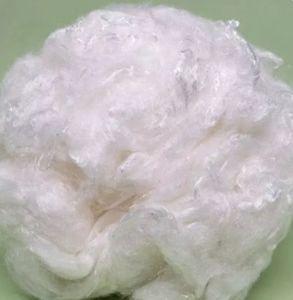Sustainable Sophistication: The Rising Demand for Cellulose Fiber in Textiles and Beyond
The global textiles and materials industry is undergoing a transformative phase with a growing emphasis on sustainability and innovation. Within this landscape, cellulose fibers have emerged as a key player due to their eco-friendly nature and versatile applications. This article delves into the current state of the cellulose fiber market, explores its various segments, and highlights the growth trends and opportunities shaping its trajectory. The CAGR for the cellulose fiber market varied depending on factors such as region, application, and type of cellulose fiber. However, the general CAGR estimation for the cellulose fiber market was projected to be around 6% to 8% from 2021 to 2026.
Browse 68 market data tables and 54 figures spread through 156 pages and in-depth TOC on “Cellulose Fiber Market by Fiber Type (Natural Cellulose Fibers (Cotton, Jute & Others), Man-Made Cellulose Fibers (Viscose, Lyocell, Modal & Others), by Application (Apparel, Home Textile, Industrial, and Others) & by Region - Trends & Forecast
Understanding Cellulose Fiber:
Cellulose fibers are natural fibers derived from plant sources, primarily wood pulp from trees. These fibers are renewable, biodegradable, and offer a sustainable alternative to synthetic fibers. Cellulose fibers are renowned for their breathability, moisture-wicking properties, and comfort, making them desirable for a wide range of applications including textiles, apparels, nonwovens, and specialty papers.
Download PDF Brochure: https://www.marketsandmarkets.com/pdfdownloadNew.asp?id=189312904
Current Market Landscape:
The cellulose fiber market has witnessed substantial growth over recent years. The increased consumer awareness regarding environmental impact has led to a surge in demand for sustainable materials. Cellulose fibers, with their low environmental footprint and natural origin, are at the forefront of meeting this demand. Additionally, industries such as fashion, home textiles, and healthcare are acknowledging the benefits of cellulose fibers, driving their adoption.
Segmental Growth:
The cellulose fiber market can be segmented into various categories based on fiber types, applications, and end-use industries:
-
Fiber Types:
- Regenerated Cellulose Fiber: This includes fibers like viscose, modal, and lyocell, which are derived from the chemical processing of cellulose. These fibers are known for their softness, breathability, and versatile applications.
- Natural Cellulose Fiber: Fibers such as cotton and bamboo fall into this category. They are minimally processed and retain the natural characteristics of cellulose, making them highly sought after for their comfort and sustainability.
-
Applications:
- Apparels: Cellulose fibers are widely used in the fashion industry to create clothing that is not only comfortable but also eco-friendly. They offer a wide array of textures and appearances, making them suitable for various clothing styles.
- Home Textiles: Beddings, towels, and upholstery made from cellulose fibers provide softness and durability, enhancing the overall quality of daily life.
- Nonwovens: Cellulose fibers are used in nonwoven applications like wipes, diapers, and medical textiles due to their absorbent and biodegradable properties.
- Specialty Papers: Cellulose fibers contribute to the production of high-quality specialty papers used in printing, writing, and packaging.
-
End-Use Industries:
- Fashion and Apparel: As sustainable fashion gains momentum, cellulose fibers are becoming increasingly popular in clothing lines of renowned brands.
- Home Furnishing: The demand for eco-friendly and luxurious home textiles is boosting the use of cellulose fibers in bedding, curtains, and upholstery.
- Healthcare: The absorbent and hypoallergenic nature of cellulose fibers make them suitable for medical textiles and hygiene products.
Request for New Version: https://www.marketsandmarkets.com/RequestNewVersion.asp?id=189312904
Growth Trends and Opportunities:
-
Sustainability Drive: The global shift towards sustainable practices and products is a significant driver for the cellulose fiber market. Consumers are increasingly valuing materials that are environmentally friendly and have a lower carbon footprint.
-
Fashion Evolution: The fashion industry's push for sustainable and ethically produced textiles is leading to collaborations between designers, manufacturers, and cellulose fiber producers to create eco-conscious collections.
-
Rise in Nonwoven Applications: The growing demand for hygiene products and medical textiles is propelling the use of cellulose fibers in the nonwoven industry.
-
Innovations in Fiber Types: Ongoing research and development are resulting in innovations in cellulose fiber types, leading to enhanced performance attributes and expanding application possibilities.
-
Emerging Markets: Increasing awareness and disposable incomes in developing economies are opening up new markets for cellulose fiber products, particularly in the Asia-Pacific region.
In conclusion, the cellulose fiber market is undergoing transformative growth driven by the shift towards sustainability and the versatility of these fibers. The various segments within the market offer a wide range of applications, appealing to industries that value both performance and environmental responsibility. As research and innovation continue to shape the cellulose fiber landscape, the future presents promising opportunities for sustainable materials in textiles and beyond.



.png)
Comments
Post a Comment